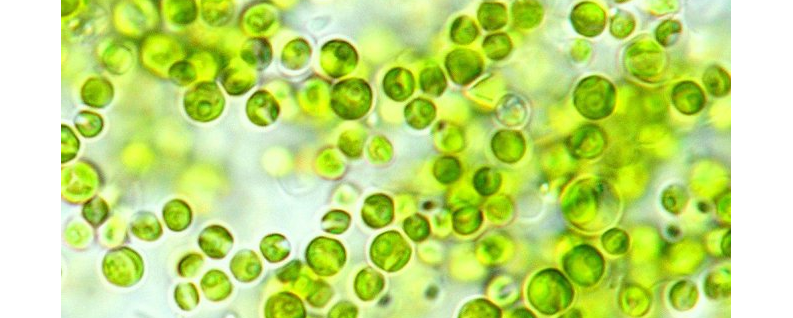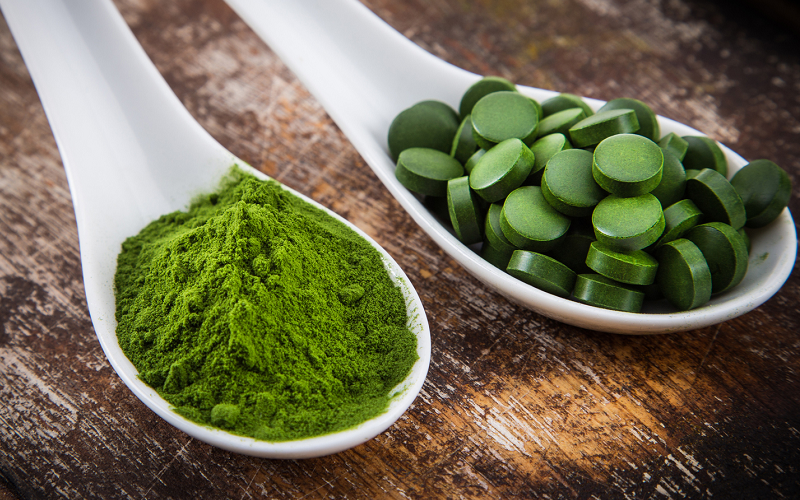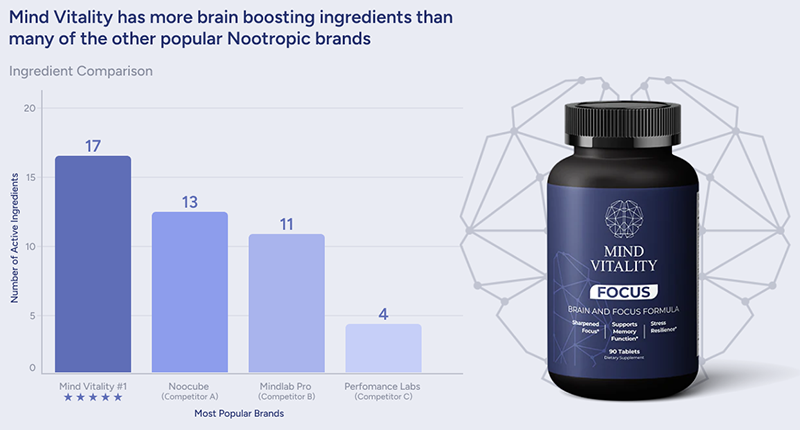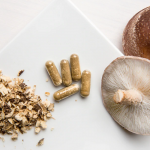Chlorella is a nutrient-dense, dark green freshwater algae. Chlorella is packed with protein, antioxidants, vitamins, minerals, and healthy fats, and is used in nutritional supplements and medicine. In the past chlorella has been overshadowed by its saltwater algae cousin, spirulina — but that’s all changing as people catch on to just how powerful of a nutrient it is.
Contents
What Is Chlorella?
Chlorella (pronounced kluh-rel-uh) is a single-celled, green freshwater algae that’s also known as chlorelle, Bulgarian green algae, or Yaeyama chlorela. The name chlorella comes from the Greek chlōros, meaning green, and the Latin suffix ella, meaning small.
Chlorella is most prevalent in Japan and Taiwan, and that’s where most of the chlorella available in the United States is grown and harvested. It’s one of the first algae to be grown specifically for the purpose of being a food supplement.
Chlorella’s make-up of 60 percent protein is impressive, but what’s even better (from a nutritional standpoint) is that, unlike most plants, it contains all nine essential amino acids. Essential amino acids are the ones that cannot be made by the body, and need to be obtained through diet: histidine, isoleucine, leucine, lysine, methionine, phenylalanine, threonine, tryptophan, and valine.
Chlorella is rich in iron and vitamin C. That’s a nice pairing, as vitamin C helps in the absorption of iron. Chlorella is also high in healthy omega-3 essential fatty acids. Like essential amino acids, essential fatty acids can’t be produced by the body and must be obtained from your diet. Chlorella also includes a wide range of antioxidants.
Chlorella Is Unicellular
Most living organisms consist of many cells — they’re multicellular. Chlorella, on the other hand, consists of a single cell — it’s unicellular.
A single Chlorella cell is microscopic and invisible to the naked eye, yet it contains every organ and function necessary for life and to exist as a complete organism. This unicellular organism is an amazing little plant that’s as powerful as many multicellular organisms.

Chlorella Is Not the Same as Chlorophyll
People often confuse chlorella and chlorophyll because of their similar sounding names and their similar popularity as plant-based health supplements. Their similarity in health claims makes sense when you know that chlorella actually contains chlorophyll.
Chlorophyll is a pigment present in green plants. It is the most important element in the process of photosynthesis — the process of a plant absorbing light and using that light to produce carbohydrates from carbon dioxide and water. Through photosynthesis chlorophyll produces the food a plant needs to grow and survive.
Differences Between Chlorella and Spirulina
Like chlorella, spirulina is a nutrient-dense algae considered a green superfood. For quite awhile spirulina was more well known to nutrition-minded people, but lately chlorella has been catching up as far as public awareness goes.
Chlorella is a unicellular green algae that grows in freshwater. Spirulina is a multicellular blue-green algae that can grow in freshwater, but is more common to saltwater.
One difference between the two algae is that chlorella contains something called Chlorella Growth Factor, or CGF. CGF — present exclusively in chlorella — gives chlorella its amazing ability to multiply four times every 24 hours. In humans CGF potentially provides several health-related benefits, including aiding in the repair of damaged nerve tissues and cell production. It can also limit the growth of virus, which increases the body’s resistance to infection. CGF appears to improve the RNA and DNA functions responsible for the production of enzymes and proteins at the cellular level.
Chlorella has more vitamin B1, vitamin D, biotin, and much more chlorophyll than spirulina. However, spirulina has more vitamin B2, vitamin B6, and selenium than chlorella. Both algae are powerful superfoods with a lot of similarities, and many people believe the relatively minor differences between them make the two compliment each other.
If you like the idea of taking both chlorella and spirulina, and you’re serious about green superfoods, you might consider getting a powder supplement like AllMax Nutrition CytoGreens — it includes both these algae, along with over two dozen additional green superfoods.
Chlorella Health Benefits
Chlorella has numerous health benefits, many coming from this algae’s ability to detoxify cells and boost immunity. These properties means chlorella can play a role in the treatment or prevention of many health concerns, including:
- Viral hepatitis
- Pancreatitis
- Metabolic syndrome (conditions that increase risk of heart disease, stroke and type 2 diabetes)
- Inflammatory bowel disease (IBD)
- High cholesterol
- High blood pressure
- Fibromyalgia
- Constipation
- Common cold
- Cancer
Removes Harmful Toxins
The best-known benefit of chlorella may be its role in removing toxins, such as heavy metals, from the body.
Heavy metals are metallic chemical elements that have a high density and are toxic, or poisonous, to humans at fairly low concentrations. Heavy metals occur naturally in the earth’s crust. Lead, mercury, cadmium, mercury, uranium, nickel, and dioxin are all examples of heavy metals. Heavy metals aren’t healthy to your body, but because you’re exposed to them daily there isn’t a means to prevent their entry into your body — diet, medications, and the environment all contribute to exposure to heavy metals.
Obviously the human body is capable of ridding itself of heavy metals — otherwise none of us would still be around! But the body can’t rid itself of these elements immediately, so anything that can speed up the rate at which the body gets rid of all these types of toxins is a good thing. Chlorella has been shown to have just that ability.
Chlorella has the ability bind to heavy metals, resulting in the toxins getting flushed them from your system before being absorbed by your body. Chlorella can also reduce the toxicity of heavy metals that have already made it to the kidneys, liver, and brain.
Heart Support
Chlorella has a few properties that can help reduce your risk of developing heart disease.
Triglycerides are a type of lipid (fat) present in your blood. Unused calories are converted to triglycerides that are stored in fat, to be used later as an energy source. Cholesterol is a fat-like substance in all the cells in your body. Your body needs some cholesterol to make vitamin D, hormones, and a few other substances. Triglycerides and cholesterol have something in common — some of each is needed, and healthy, while too much of either contributes to heart disease.
Studies show that chlorella can help lower both triglyceride and cholesterol levels. It doesn’t appear to be one single factor about chlorella that accomplishes this feat. Instead, it’s most likely the combination of the niacin, fiber, carotenoids, and antioxidants in the algae that do the trick.
Chlorella has one other heart-healthy property. The minerals and fatty acids in the algae decrease blood vessel stiffness. This results in improved blood vessel function and lowers blood pressure.
Immune System Support
The immune system is a protective network of cells and organs that exists to help the body fight infections and function properly — it shields the body from harmful substances, germs, and cell changes that all have the potential to cause health issues.
Chlorella strengthens the immune system in a number of ways — perhaps most importantly by increasing sIgA. Though this action is a very important property of chlorella, it’s seldom discussed in non-scientific references to chlorella — probably because it’s a complicated and fairly “dry” topic. With that said, it’s important enough that it is worth several sentences of explanation targeted towards the non-expert readers (which is probably just about all of us).

A big part of the immune system are the mucous membranes that line many structures and tracts of the body, including the nose, mouth, intestines, stomach, lungs, and bladder. When invaders such as fungi, viruses, bacteria, and parasites reach any mucous membrane, the cells of the membrane respond by producing antibodies. The most important of these antibodies is called secretory immunoglobulin A, usually referred to as simply sIgA.
The sIgA antibody is considered the body’s first line of defense to protect against the entrance of any of the above-mentioned organisms or substances. The sIgA antibodies work by binding to the surface of the invaders, preventing them from multiplying, and thereby stopping the spread of disease or infection.
Anyone with low sIgA levels generally has an increased risk of irritable bowel syndrome (IBS), inflammatory bowel disease, intestinal infections, food sensitivities, and a host of other serious health concerns.
And here’s the real problem — low levels of sIgA are incredibly common. Fortunately, chlorella offers the ideal solution. Chlorella provides beneficial effects on sIgA levels — as demonstrated in numerous studies.
Protection from Chronic Diseases
Antioxidants play a powerful role in reducing your chances of suffering from a chronic disease such as cancer, coronary heart disease (CHD), cardiovascular disease (CVD), or arthritis. Chlorella is rich in a number of antioxidants, including vitamin C, beta-carotene, lutein, lycopene, and chlorophyll. Which makes chlorella a great supplement for protection from chronic diseases.
And speaking of chlorophyll, this pigment is known to bind with some cancer-causing agents to effectively block the carcinogenic effect of those agents. Score another point for the power of chlorophyll.
Obesity is a well-known contributor of some serious health concerns, including diabetes, insulin resistance, and heart disease. However, there is another factor that contributes to the occurrences of these same health issues — and it’s a factor that you have little control over. Advaned glycation end products, or AGEs, are harmful compounds that accumulate naturally as you age. The particular antioxidants present in chlorella can reduce the production of AGEs, thereby reducing your chances of developing some chronic diseases.
Improves Skin Health
Being constantly exposed to the elements makes it necessary for your skin to constantly replace cells and renew itself. Chlorella’s unique Chlorella Growth Factor, or CGF (discussed in this article’s Differences Between Chlorella and Spirulina section) helps to spur the quick regeneration of cells — including skin cells.
Bioactive compound are a type of chemical present in small amounts in some foods and plants. Bioactive compounds have the property of being able to provide health benefits beyond the basic nutritional value of the compound. Chlorella contains a number of such bioactive compounds, including amino acids that stimulate collagen production in the skin. Increased collagen minimizes wrinkles and keeps skin generally healthier looking.
How and When to Take Chlorella
With chlorella, there is no set, established amount to take in a day. Daily dosages from 300 mg (about a third of a gram) up to 1 or 2 grams are common, though some chlorella enthusiasts take up to 10 grams per day. Note that no case of an overdose of this algae has ever been reported.
For best digestion, take chlorella before meals and with a large glass of water. That’s easy to do if you have the chlorella in capsule or tablet form. If you have it in powder form (which is typical if you get your chlorella as one ingredient in a multi-ingredient supergreens supplement such as AllMax Nutrition CytoGreens), then mix it in your favorite juice, or even in a smoothie.
Chlorella is non-stimulating, so you can take it at any time of the day, including before going to bed.
Chlorella Side Effects and Safety
Chlorella is considered very safe and well-tolerated. The few side effects that some users experience — nausea, stomach cramps, or diarrhea — are mild, and typically resolve shortly as your body adapts to the supplement.
Chlorella has moderate levels of iodine, which for most people is not an issue. However, a person with the thyroid disease hyperthyroid should avoid chlorella as an excess of iodine can cause a worsening of symptoms.
Chlorella and Pregnancy
Not only is chlorella considered safe for pregnant women, it may in fact be beneficial! Researchers concluded that chlorella decreases dioxin — a particularly hard toxin — in both breast milk and fetal cord blood. And there’s more.
Earlier in this article, in the Immune System Support section, it was mentioned that chlorella increases levels of secretory immunoglobulin A (sIgA) — an antibody that protects the body from invasion by bacteria and viruses. This antibody is a key immune molecule that the mother passes on to her child, so raised levels of sIgA are very beneficial to the child’s health.
Preeclampsia is a pregnancy complication marked by high blood pressure and often times issues with the kidneys and liver. A study involving chlorella supplements and pregnant women resulted in lower incidence of high blood pressure, protein in the urine (proteinuria), and tissue swelling (edema) — all of which implies a reduced risk of preeclampsia.





